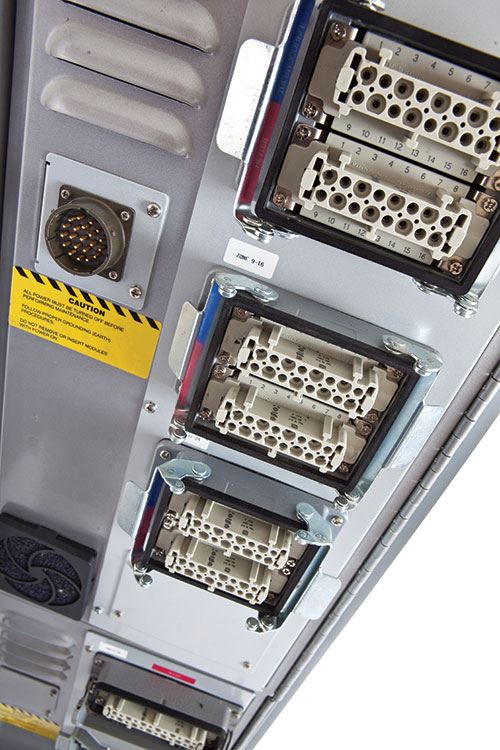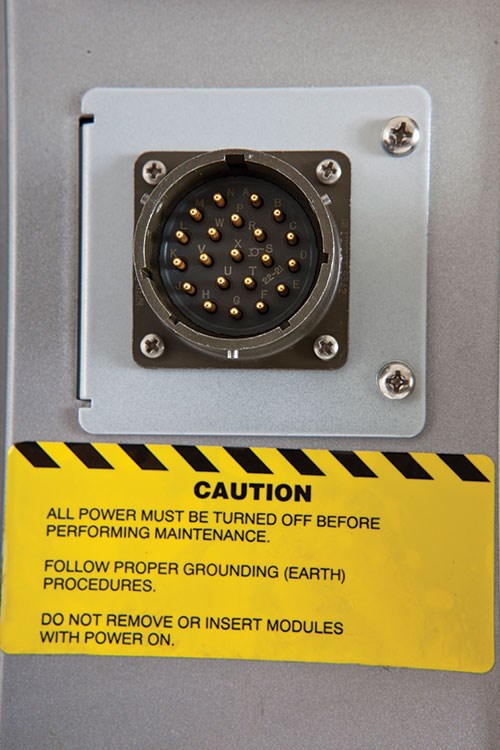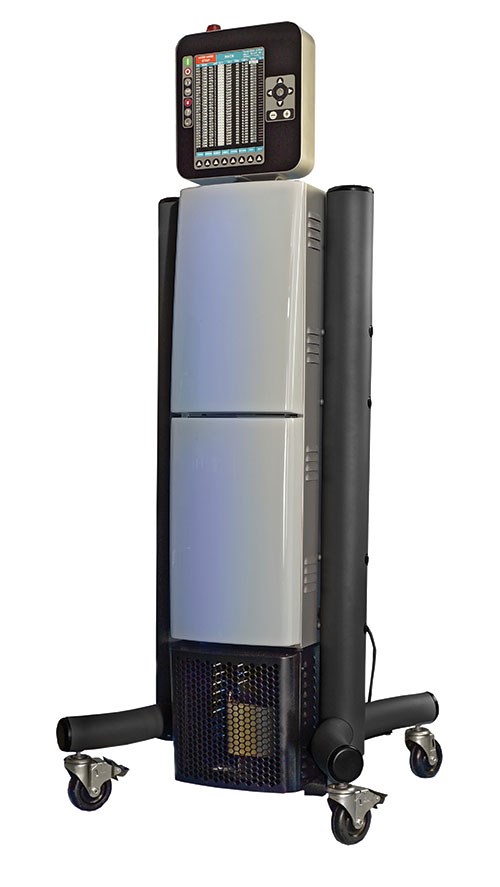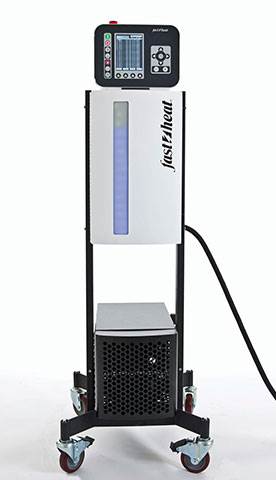Help Customers Gain Control of Mold and Part Quality
Take a closer look at a very important, and often overlooked, piece of auxiliary equipment that affects mold and part quality—the hot runner temperature controller.
Tooling manufacturers build their molds to last—and stay in service. That’s why they recoil at the thought of their injection molding customers asking, “Why is my mold not working properly?” After some troubleshooting, often the answer is not found in the tool, but in an exceptionally important, and often overlooked, piece of auxiliary equipment—the hot runner temperature controller.
Many injection molders still use the standard-issue modular controllers with 1970s technology. That equipment deficit is becoming a weak link in the manufacturing process. Molders are asking their moldmaking partners to build new tools that take advantage of breakthroughs in processes, product materials and complex part designs. But those molders are not considering that these new processes require that the temperature tolerances in their heaters be more precise than ever.
The biggest quality issues injection molders have are leaking, short shot, stringing and burning. These telltale signs indicate inconsistent temperature control in the mold’s heaters. However, if the tool is not performing and needs to go down, it reflects poorly on the moldmaker—even though the tool itself is not the source of the poor part quality.
If moldmakers suggest their customers use an advanced hot runner temperature controller, they can help manufacturers protect their molds, save money, reduce downtime and scrap, improve part quality—and become a trusted partner.
Modular Versus Advanced Temperature Controllers
Modular controllers have been around for a long time. They seem convenient because parts are inexpensive and easily found on the manufacturing floor and toolroom. Process engineers understand how to coax these controllers into performing well enough, but this also means they have to compensate for large temperature swings (overshoot/undershoot) and the resulting scrap from every production run, day after day.
An advanced temperature controller allows for complexity and precision by managing all zones as a complete system while predicting temperature behavior and reacting to trends—making it an excellent choice for challenging part designs, hard-to-mold materials (such as PVC, PPS, acetal, nylon 6-6), color changes and less specialized machinery.
The advanced temperature controller can also be used throughout a manufacturer’s operation for efficiency. Based on customer feedback, injection molders are seeing big savings in many plant areas, including:
1. Toolroom Diagnostics—$25,000 in accidental tear down and error prevention
2. Set-Up/Start-Up/Preheat Stations—$20,000 by protecting new tooling and assets
3. Production—$20,000 in part defects, challenging geometries and materials waste
4. Toolroom Maintenance—$8,000 through attention to detail and customized settings
5. Energy Efficiency—$100 per year/24-zone controller
Added up over one year, one advanced temperature controller on one tool can save a company more than $74,000 in reduced costs.
The Advanced Breakdown
While advanced hot runner temperature controllers are more expensive than standard modular controllers, the manufacturer’s cost savings in reduced scrap and downtime pay for the unit. This is important for moldmaking manufacturers as well. As economic indicators trend upward and molders work to increase productivity, it makes sound business sense for them to eliminate waste and elevate quality with a carefully researched hot runner temperature controller. If they accomplish these goals, they can increase their part making capabilities by purchasing new tools.
When selecting a new controller, answering these questions can help determine the best option for your operation:
1. How many zones and/or heaters do I need to control? Is this the largest mold in the plant?
2. Do I need a compact 480V to 240V isolation step-down transformer mounted on the mobile rack?
3. Will the toolroom need the controller for mold maintenance and diagnostic support?
4. What cables and connections are needed to match the mold and wiring pin-outs? Is there a company standard for cables and connections?
5. Are there space constraints on the manufacturing floor? Would placing the temperature controller behind the injection-molding machine be helpful?
6. Are any custom features needed on the hot runner temperature controller?
7. Is it easy to use? Is the learning-curve short for new employees?
Low Cavitation Vs. High Cavitation
Most thoughts about cavitation lean toward how many zones or heaters are contained in a tool. Low cavitation tends to be defined as zones up to 24, and high cavitation is usually measured at 24 zones and above.
Low cavitation hot runner temperature controllers are a big step-up from traditional module controllers. By simply replacing a modular controller with an advanced low cavitation controller on a tool in production, significant quality differences will be immediately apparent because many manufacturing challenges can be quickly addressed, such as:
Mold Moisture Causing Heater Damage
Controller Solution: Bake-out–specifies the time and % power for the heaters to safely remove any condensation out of the mold.
Opening Circuit Breaker and/or Heater Damage During Start-Up
Controller Solution: Evensoak and waterfall–Allows the customer to bring a larger mold up to temperature efficiently while using 100-amp service.
Stringing, Flashing, Burning
Controller Solution: PID–A stable and precise algorithm that constantly tunes to the mold. The controller manages the mold as a system and consequently handles tight part tolerances and resins needing small temperature profiles.
Toolroom and Production Unsure of Mold Issues, Delaying Start-Up
Controller Solution: Alarm display screen–Menu screens provide instant feedback to company personnel and save time with diagnostics and mold maintenance.
Company Unable to Provide Adequate Training to New Employees
Controller Solution: Menu screens–The user is always one click away from the main screen, no matter where he or she is in the set-up.
Controller Solution: File recipe–Allows customer to save the mold temperature settings to a file. This will provide process consistency.
Thermocouple Failure
Controller Solution: Slaving–Allows the operator to operate two zones using one thermocouple.
High cavitation hot runner temperature controllers have all of these same solutions for multi-cavity mold applications up to 180 zones.
In addition, they are capable of communicating with other equipment in the molding cell through the Input/Output (I/O) feature. The I/O allows the temperature controller to easily interface with the injection-molding machine and other auxiliary equipment. The I/O consists of four inputs and four outputs that can be triggered using the controller’s alarms and dry contacts.
Figure 1 illustrates that if the controller alarms, the operator can select the appropriate remote function: Run Stop, Boost and Idle.
Summary
Depending on the manufacturing need, an injection molder can determine which hot runner temperature to use for a particular application based on zones alone. However, for more flexibility and customization options, high cavitation hot runner temperature controllers may be
Related Content
Treatment and Disposal of Used Metalworking Fluids
With greater emphasis on fluid longevity and fluid recycling, it is important to remember that water-based metalworking fluids are “consumable” and have a finite life.
Read MoreForces and Calculations Are Key to Sizing Core Pull Hydraulic Cylinders
To select the correct cylinder, consider both set and pull stroke positions and then calculate forces.
Read MoreHow to Eliminate Chatter
Here are techniques commonly used to combat chatter and guidelines to establish a foundation for optimizing the moldmaking process.
Read MorePlastic Prototypes Using Silicone Rubber Molds
How-to, step-by-step instructions that take you from making the master pattern to making the mold and casting the plastic parts.
Read MoreRead Next
Temperature Control Boosts Hot Runner Productivity, Eliminates Burned Parts
“The controllers feature a system that ‘bakes out’ moisture within the heating element at every startup. This reduces downtime—and protects the mold.”
Read MoreReasons to Use Fiber Lasers for Mold Cleaning
Fiber lasers offer a simplicity, speed, control and portability, minimizing mold cleaning risks.
Read MoreAre You a Moldmaker Considering 3D Printing? Consider the 3D Printing Workshop at NPE2024
Presentations will cover 3D printing for mold tooling, material innovation, product development, bridge production and full-scale, high-volume additive manufacturing.
Read More














.jpg;maxWidth=300;quality=90)
















